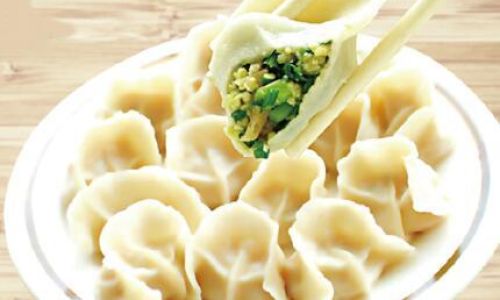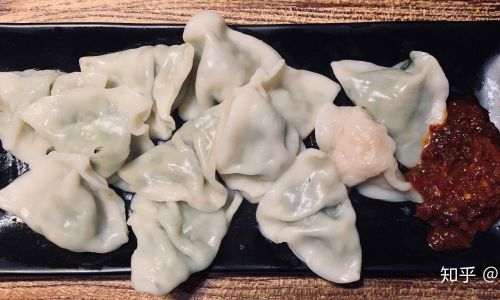Dumplings, those delightful pockets of dough filled with savory or sweet ingredients, have transcended cultural and geographical boundaries to become a global comfort food. Whether steamed, boiled, pan-fried, or deep-fried, dumplings offer a versatile canvas for culinary creativity. Yet, the question remains: What dipping sauce elevates their flavor to perfection? The answer lies in a fascinating interplay of tradition, regional preferences, and personal taste. This article delves into the world of dumpling dipping sauces, exploring classic pairings, bold experiments, and the cultural significance behind each condiment.
The Foundation: Traditional Chinese Dipping Sauces
In China, where dumplings (jiaozi) originated over 1,800 years ago, dipping sauces are as varied as the fillings themselves. The most iconic pairing is a simple yet profound mixture of black vinegar and soy sauce, often enhanced with minced garlic, sesame oil, or chili oil. Black vinegar, with its mellow acidity and subtle sweetness, cuts through the richness of pork or beef dumplings, while soy sauce adds umami depth. For those seeking heat, a drizzle of Lao Gan Ma chili crisp or freshly chopped bird’s eye chilies introduces a fiery kick.
In Sichuan province, dumpling enthusiasts swear by a numbing-and-spicy sauce (huojiao you). Crafted from Sichuan peppercorns, chili flakes, garlic, and oil, this condiment creates a tingling sensation on the palate that harmonizes with the region’s bold flavors. Conversely, in Shanghai, a lighter touch is preferred: a blend of light soy sauce, sesame oil, and finely chopped ginger complements the delicate sweetness of local dumplings stuffed with crab and pork.

Regional Variations Across Asia
Dumplings have evolved differently across Asia, and so have their dipping sauces. In Japan, gyoza (pan-fried dumplings) are often dipped in a mixture of rice vinegar, soy sauce, and rayu (chili oil). Some connoisseurs add a pinch of sansho pepper for citrusy complexity. For shumai (steamed dumplings), a delicate ponzu sauce (citrus-soy) or grated daikon radish with soy sauce provides a refreshing contrast.
Korean mandu dumplings, whether steamed or deep-fried, pair beautifully with ssamjang—a thick, savory paste made from fermented soybean paste, chili, garlic, and sesame oil. Alternatively, a tangy vinegar-based sauce with scallions and sesame seeds cuts through the richness of kimchi-filled dumplings.
In Vietnam, bánh bao (steamed buns) and bánh gối (pillow dumplings) are often accompanied by nước chấm, a dipping sauce made from fish sauce, lime juice, sugar, garlic, and chili. The balance of salty, sweet, sour, and spicy notes elevates the dumplings’ meaty or vegetarian fillings.

Global Influences: Beyond Asia
As dumplings gained popularity worldwide, chefs and home cooks began experimenting with non-traditional dipping sauces. In Eastern Europe, pelmeni (Russian dumplings) are traditionally served with sour cream, butter, or vinegar, but modern twists might include horseradish cream or smoked paprika oil. Polish pierogi lovers often opt for caramelized onions or bacon bits mixed with sour cream, adding a smoky richness to potato-and-cheese-filled dumplings.
Italian tortellini and ravioli inspire Mediterranean-inspired sauces. A drizzle of extra-virgin olive oil sprinkled with grated Parmesan and fresh basil enhances cheese-filled dumplings, while a tomato-based sauce with garlic and oregano complements meat-filled varieties. For a fusion twist, try a pesto made from basil, pine nuts, and Parmesan, thinned with a touch of olive oil.
Creative and Fusion Pairings
The beauty of dumpling dipping sauces lies in their adaptability. Here are some innovative combinations to try:

- Peanut Sauce: Blend peanut butter, soy sauce, lime juice, honey, garlic, and chili flakes for a creamy, nutty sauce that pairs well with chicken or vegetable dumplings.
- Yogurt-Based Sauce: Greek yogurt mixed with mint, cucumber, lemon zest, and dill offers a cooling contrast to spicy lamb dumplings.
- Hoisin-Ginger Glaze: A mixture of hoisin sauce, grated ginger, rice vinegar, and toasted sesame seeds adds a sticky-sweet glaze to pan-fried dumplings.
- Mango Chutney: For a tropical twist, serve sweet dumplings with a tangy mango chutney spiked with cilantro and lime.
Vegetarian, Vegan, and Diet-Friendly Options
With the rise of plant-based diets, dumpling lovers now have access to sauces that cater to dietary restrictions without sacrificing flavor:
- Vegan Soy-Ginger Sauce: Combine tamari, rice vinegar, sesame oil, grated ginger, and maple syrup.
- Cashew Cream: Soak cashews, blend with nutritional yeast, lemon juice, garlic, and water for a dairy-free alternative to sour cream.
- Spicy Tahini: Whisk tahini with lime juice, garlic, chili paste, and water until smooth.
For low-sodium diets, reduce soy sauce and replace it with coconut aminos or liquid aminos. Gluten-free options include tamari or gluten-free hoisin sauce.
Practical Tips for Perfect Pairings
- Balance Flavors: A good dipping sauce should harmonize acidity, sweetness, saltiness, and spice. Taste as you mix and adjust proportions accordingly.
- Match Intensity: Lightly seasoned dumplings (e.g., shrimp and chive) pair well with delicate sauces, while robust fillings (e.g., pork and cabbage) can handle bolder condiments.
- Consider Cooking Methods: Steamed dumplings benefit from aromatic sauces like ginger-scallion, while pan-fried dumplings hold up to thicker dips like chili crisp.
- Garnish Creatively: Top sauces with toasted sesame seeds, chopped herbs, or crispy fried onions for texture and visual appeal.
Cultural Significance and Rituals
Dipping sauces are more than mere condiments—they are cultural touchstones. In China, the act of dipping dumplings in vinegar and soy sauce during Lunar New Year celebrations symbolizes prosperity and unity. In Japan, gyoza dipped in chili oil reflect the country’s love for spicy flavors, while in Poland, pierogi smothered in butter and onions are a hearty nod to peasant cuisine.

Conclusion: The Joy of Experimentation
The quest for the perfect dumpling dipping sauce is a personal journey. While tradition offers timeless guidelines, modern palates crave innovation. Whether you prefer the tang of black vinegar, the creaminess of peanut sauce, or the zing of lime-infused yogurt, the key is to experiment and savor the process. After all, dumplings are about celebration—and what better way to celebrate than by dipping, swirling, and savoring every bite?
So next time you steam a batch of jiaozi or fry a plate of gyoza, remember: the sauce is not just an accompaniment but a bridge between culture, memory, and pure culinary pleasure.





0 comments